
Paints for a Healthy Home: Looking beyond VOCs
More than 20 years ago, the US Environmental Protection Agency set limits on the amount of VOCs, or volatile organic compounds, that manufacturers could include in paint. Although the action was directed at curbing air pollution, it also triggered a significant step toward improving the air quality in our homes. It did this by reducing the volume of toxic chemicals released into the air.
Since then, evolving regulations and manufacturers who have rushed to market low or no VOC paints as healthier have reduced these chemicals even further.
But as some homeowners have found, meeting or even surpassing accepted VOC limits does not completely eliminate the health effects of a freshly painted room. Those sensitive to airborne chemicals, in particular, may still find that paint triggers a host of unpleasant symptoms.
That's because commercially produced paint contains many toxic chemicals and irritants. These irritants are not necessarily VOCs, and some chemicals that technically are VOCs are not regulated under the law. Understanding this can help you choose the best paint for maintaining a healthful environment inside your home.
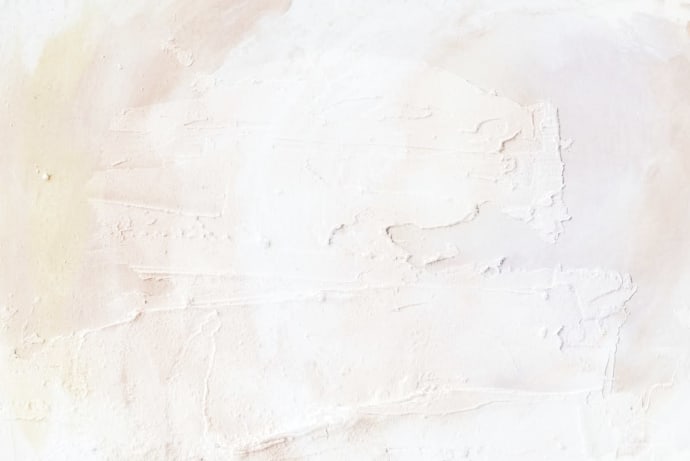
What Is Paint Made Of?
Paints are complex substances made up of a variety of chemicals that perform different functions. These include:
- Binders and resins that turn the liquid paint into a solid film when it dries
- Solvents that work with the binders to help the paint flow
- Fillers that add texture and durability, and
- Pigments that give the paint its color.
Most paints also include chemicals that act as preservatives or mold-and-mildew inhibitors, and some have odor-masking agents.
Related Products
Shop Related Products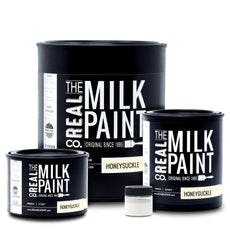
Real Milk Paint
27 Colors·
3 Sizes
$18.99 - $69.99
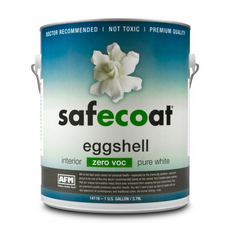
AFM Safecoat Zero VOC Interior Paint - White
4 Sheens·
2 Sizes
$72.00 - $405.00
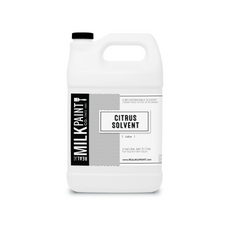
Real Milk Paint Orange Oil Natural Citrus Solvent
2 Sizes
$40.99 - $82.99
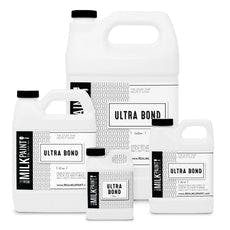
Real Milk Paint Ultra Bond Adhesion Promoter
4 Sizes
$13.99 - $82.99
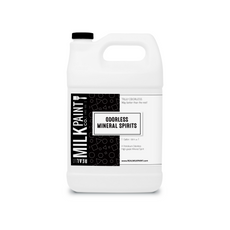
Real Milk Paint Odorless Mineral Spirits
$29.99
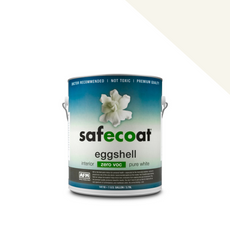
AFM Safecoat Eggshell Interior Paint - Fashion Colors
16 Colors·
2 Sizes
$75.00 - $405.00
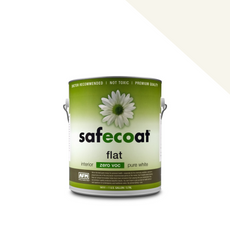
AFM Safecoat Flat Interior Paint - Fashion Colors
16 Colors·
2 Sizes
$67.00 - $355.00
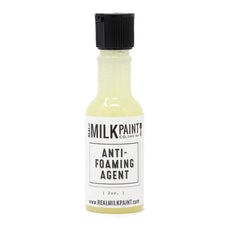
Real Milk Paint Anti-Foam Agent 2 oz
$10.99
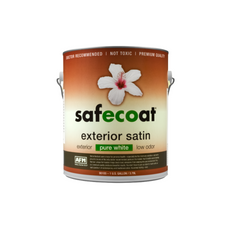
AFM Safecoat All Purpose Exterior Satin
37 Colors·
2 Sizes
$82.00 - $405.00
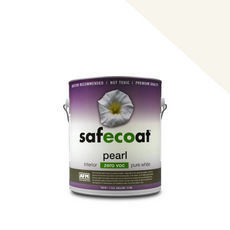
AFM Safecoat Pearl Interior Paint - Fashion Colors
14 Colors·
2 Sizes
$74.00 - $380.00
Significant to the performance of binders and solvents are the group of chemicals known as VOCs. These are organic chemical compounds that evaporate readily into the air under normal conditions. This evaporation means that when they're present in paint or other materials inside your home, they're also present in the air you breathe. Short-term exposure to VOCs can cause nose, throat, and eye irritation, headaches, nausea, dizziness, and fatigue. Long-term exposure has been linked to cancer and damage to the liver, kidneys, and nervous system. Formaldehyde, benzene, kerosene, acetone, and toluene are examples of VOCs used in paint.

How Much VOCs are Allowed in Paint?
The baseline federal limits for VOC content in paint are 250 grams per liter (g/l) for flat paint and 380 grams per liter for semi-gloss or glossy paints. However, a dozen states adhere to the rule of the Ozone Transport Commission, which limits VOCs to 100 g/l for flat finishes and 150 g/l for glossy paints sold in those states. And many paint manufacturers meet the even stricter standards of California's South Coast Air Quality Management District (SCAQMD) Rule 1113, which caps VOC content at 50 g/l. SCAQMD is the regulation that must be met for products to qualify as 'low-emitting products' for LEED Certification. Paints labeled "zero" VOC typically contain fewer than 5 grams of VOCs per liter.
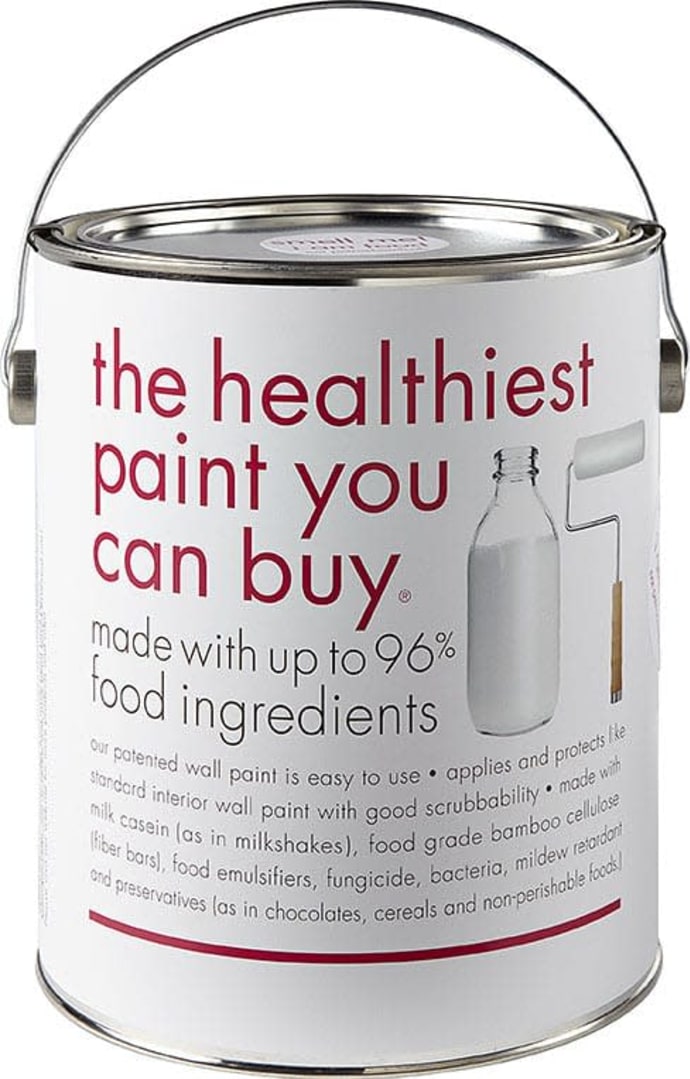
What is the Difference Between Non-Toxic and No-VOC Paints?
Just because a paint is labeled as "zero" VOCs doesn't mean it is non-toxic. Or, for that matter, that it doesn't include other substances that can be hazardous to your family's health. It doesn't even mean that it is free of VOCs. As even the EPA concedes, "the norms and requirements currently used within the product labeling and certification industry for indoor products are not standardized." This lack of ground rules makes it difficult for consumers to compare products or fully understand what VOC-content labels and related certifications mean.
That's in part because EPA's list of regulated VOCs—developed under the Clean Air Act—was focused on chemicals that contribute to smog. That leaves many toxic VOCs unregulated and uncounted, despite their impact on indoor air quality. These so-called "exempt" VOCs still show up in no-VOC paints. One example is acetone, a VOC that can cause dizziness, dermatitis, eye, nose, and throat irritation. Other paint ingredients fall into a group of 187 chemicals identified by the EPA as Hazardous Air Pollutants (HAPs), also known as Air Toxics. These are regulated under a patchwork of rules and include benzene, toluene, and formaldehyde (formalin), linked to cancer in laboratory animals.

What Other Hazardous Ingredients Does Paint Contain?
While the greatest concentration of harmful substances is found in the solvents and binders, paint manufacturers add many other ingredients to enhance paint performance. Ironically, some have become more necessary by the wholesale shift from oil-based paints to water-based paints driven by lower VOCs' quests. Some of these other harmful ingredients include:
- Biocides
- Odor Masking Agents
- APEs, and
- Tints
What Is a Biocide?
One example is biocides—sometimes referred to as protein inhibitors—that prevent mold, mildew, and spoilage. Without biocides, you couldn't store water-based paints without them breaking down and becoming foul-smelling and unusable. Eliminating biocides, then, is a challenge even for manufacturers specializing in safe paint.
What Are Odor Masking Agents?
Less critical to paint performance are odor-masking agents. These patented formulas employ a variety of chemicals to disguise the odor of paint as it dries. While you may not smell the chemicals in a low-odor paint, that doesn't mean they aren't there. Also, adding an odor-masking compound adds another potentially irritating substance.
What Are APEs (Alkylphenol Ethoxylates)?
A specific category of chemical compounds receiving scrutiny for their health and environmental effects is alkylphenol ethoxylates (APEs). These chemicals, added to paints as surfactants, are suspected endocrine disruptors and toxic to fish when released into the environment. Several big paint brands have already eliminated them, including Benjamin Moore's Aura, Natura and Regal Select lines, Sherwin-Williams Emerald, Harmony, and SuperPaint lines.

Does Tinting Paint Add VOCs?
Tints used to colorize paint can add VOCs and APEs to base formulas that themselves are free of VOCs. Tinting your paint a light pastel color might add a negligible amount of VOCs, but deep tints could add 100 or more grams to a can of paint. What's more, a deep base might by itself be higher in VOCs than other products. The good news is that most eco-friendly paint lines offer VOC-free tints. "It's gotten to the point where you don't need a VOC colorant," says Jay Watts, vice president of AFM Safecoat. Still, it's worth asking for a low-VOC tint when it's time to turn that can of base paint into the vibrant vermillion you've chosen for your powder room.
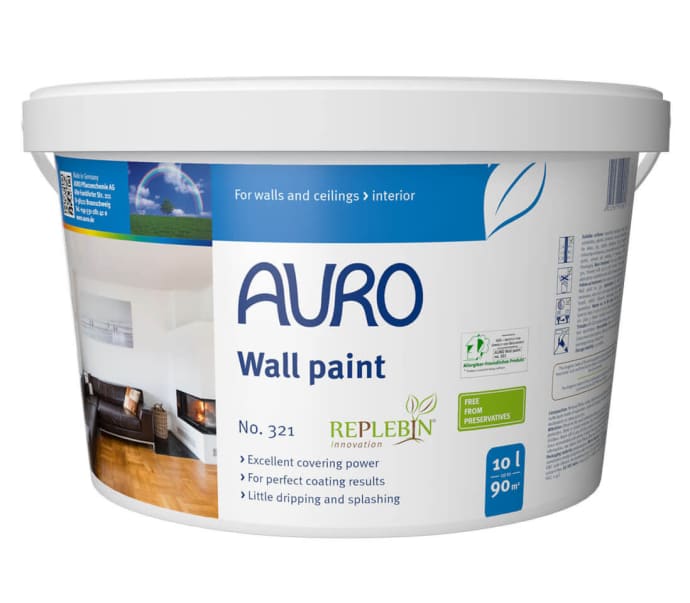
How Can I Identify Which Paints are the Least Toxic?
Several organizations provide third-party assurance that a product meets the low-VOC limits it advertises. Many of these earn credit for low-emitting materials from green-building programs such as LEED, NAHB's National Green Building Standard, and those of the WELL Building Institute.
Paints meeting the GS-11 Paint Standard from the nonprofit organization Green Seal contain no more than 50 g/l of VOCs (for flat paints) or 100 g/l (for non-flat paints). In addition to VOCs, the standard also limits several other chemicals, including certain carcinogens, reproductive toxins, and heavy metals, as well as several "exempt" VOCs and EPA-listed Hazardous Air Pollutants.
Other certifications focus not on VOC content but potentially dangerous emissions, focusing on chemicals we're breathing in. For example, UL's GREENGUARD Gold certification limits the emissions of 360 different VOCs for which health impacts are known. They cap the total VOC emissions to 220 micrograms per cubic meter. According to Josh L. Jacobs, UL's director of environmental codes and standards, limits are based on safe thresholds established by scientific organizations worldwide and then reduced further. More than 1400 paints and coatings have obtained Greenguard Gold certification.
SCS Indoor Advantage and Indoor Advantage Gold certification also measure emissions, limiting 35 individual VOCs specified under the California 01350 standard. Its green products guide lists certified paints.

If you'd rather go straight to the source for an in-depth look into the chemicals in a given brand of paint, the nonprofit Health Product Declarations (HPD) Collaborative maintains a Public Repository that documents chemicals of concern to scientists and sustainable building programs.
Likewise, the Declare label from the International Living Future Institute requires manufacturers to disclose both VOC content and the presence of any "Red List" chemicals. These are substances identified by the Living Building Challenge as posing severe risks to human and environmental health. The list includes VOCs as well as antimicrobials, formaldehyde, and heavy metals.
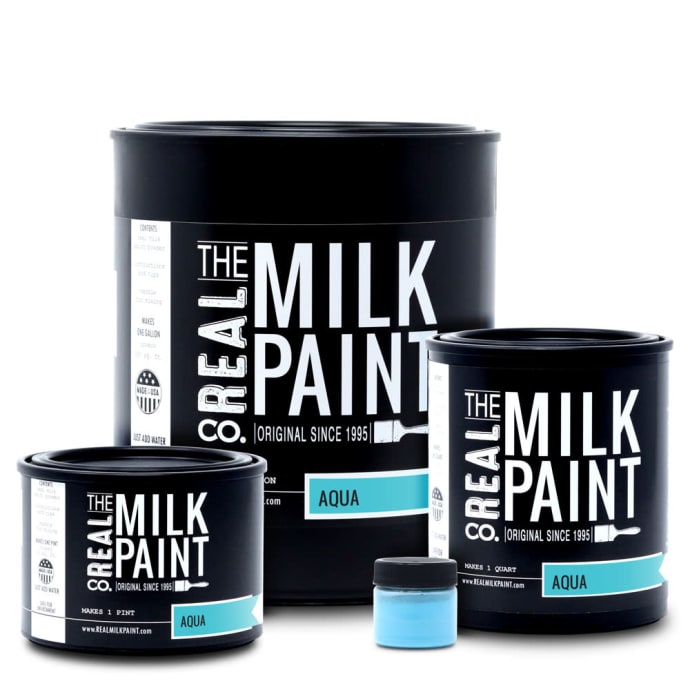
Are There Any Paints That Don't Have Toxic Ingredients?
While the presence of some of the worst offenders has been reduced (like VOCs) or eradicated (like lead in the 1970s), it's impossible to find a synthetic paint that is completely free of hazardous chemicals. If chemical cleanliness is a top priority in your home, consider coatings derived from natural ingredients, such as chalk, milk, clay, and minerals. While many all-natural paints are developed for furniture, there are some natural products formulated for interior walls:
- Paints from Auro USA are made from natural raw materials and trademarked biogenic binders instead of petrochemical solvents.
- Anna Sova Food Paint is made with milk protein, food-grade bamboo cellulose, food emulsifiers, mildew retardant, and preservatives. Their pastel shades utilize European pigments that are VOC- and APE-free.
- Bioshield, founded in the 1980s in collaboration with the Volvox Paint Company of Germany, offers clay-based and solvent-free chalk paints along with mineral and earth pigments.
- Graphenstone paint has an extensive list of certifications, including Cradle to Cradle, and is formulated based on lime. It is free of VOCs and formaldehyde, is breathable, and has a high pH, which prevents mold and fungus growth.
- Green Planet Paints are made from minerals and plant oils with colorants that are non-VOC and contain 80% recycled bio content.
- The Real Milk Paint Company offers 56 colors in matte-finish paint that is mixed from a powder. Made with milk protein, lime, and earth pigments, it's VOC-free, non-toxic, and food-contact safe. Waste paint is biodegradable and compostable.
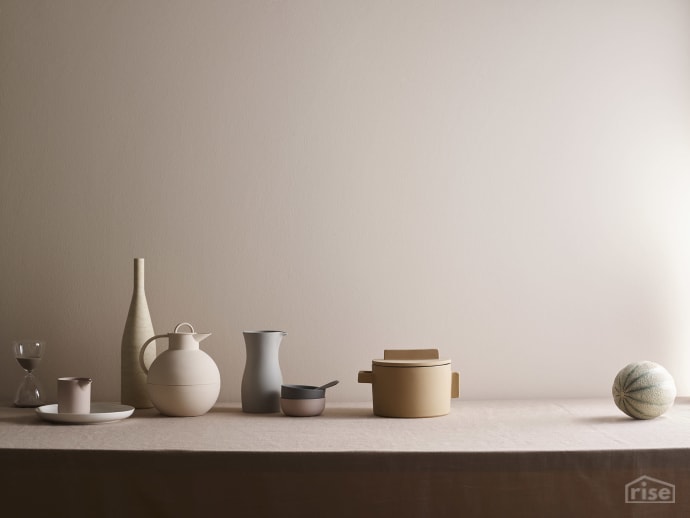
Whether you choose an all-natural paint or a zero-VOC synthetic one, it's worth doing your homework to ensure it's the best choice for your project. If someone in your home is chemically sensitive, obtain a test sample first and review the safety data sheet (SDS) if available. (This document, formerly known as a Material Data Safety Sheet, does not list all chemicals but includes OSHA requirements for workplace safety.) When painting, use appropriate protective gear and ensure good ventilation during and after application.
Paint adds color and life to the interior of a home. Advances in less-toxic paint formulas — thanks to government pressure and consumer demand — have helped ensure it doesn't subtract from the health of your home.
Disclaimer: This article does not constitute a product endorsement however Rise does reserve the right to recommend relevant products based on the articles content to provide a more comprehensive experience for the reader.Last Modified: 2021-11-26T17:18:24+0000Article by:
Debra Judge Silber
Debra Judge Silber is a Connecticut-based journalist who writes on home design with an eye toward practices that support our health and our planet. She is a former editor at This Old House, Fine Homebuilding and Inspired House, and has written for a number of other publications.